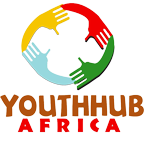Last weekend, Twitter and Facebook went abuzz for a creditable social cause. Courtesy of Youth Initiative for Advocacy, Growth and Advancement (YIAGA), a non-profit, the issue of “constitutionalism and the rule of law in Africa” became the subject of the online consultation. It was an archetypal use of social media for social good and development. Development is a process. It is not an event neither is it a one-off activity. The standard of a nation’s wellbeing expressed as Gross Domestic Product does not provide the full picture of development for a nation and its citizenry. The choice of the phrase — Human Development as a more topical choice in expressing this captures every aspect of the individuals’ wellbeing — economic wellbeing, health and political freedom. The underscored interest must remain the beneficiary — humans. As codicil, it is erroneous to believe that an organisation can offer development to people. Development is never given. The need to help people actualise development goals has led to the emergence of non-governmental organisations in various areas of life especially as it affects the supreme thematic areas of various non-profits.
It is simple to tweet and it’s trouble-free to have connections on LinkedIn. It’s easy to update status on Facebook. It does not take a sweat to broadcast messages using Blackberry Instant Messenger or the now well patronised Whatsapp. It’s likewise not rocket science starting a blog. What is not easy is regularly coming up with contents that are engaging enough to squeeze out the benefits and actions from using these tools that have made steady intrusion into our lives. New media or Web 2.0, which has the social media embedded in it, shares an obvious intersection with development — the drive for change. It becomes development truly when it is a change that is owned by the people.
Development reports seldom make headline except when a key political figure is involved or on days when ‘news is slow’, to use newsroom parlance. If it however does, it is possible that a lot has been paid to grab front page attention. In order to be visible and sometimes impactful, non-profits genuinely have the desire to be seen. That desire can only be matched with keeping abreast of changes in technology. The digital world holds several tools that an organisation would need to tell its story to the world. In the traditional form, news platforms are always content hungry and the dynamics of each media organisation or outlet is where non-governmental organisations should pull their methods from.
No singular activity — event or project should happen in the life cycle of a non-profit without the deployment of new media. New media use is based on participation which is one ideal at the heart of any social enterprise. This is because of the need for crowd collaboration from people of various background and sources involved in social enterprises.
Social media is arguably one of development workers’ best buddies. It is the perfect means to amplify the modest effort of non-governmental organisations given the usual lean budgets. Non-governmental organisations design projects based on baseline surveys and networks before deciding if a project is worth implementing or not. It is also widespread feature to have a Google search become the means of finding organisations into specific project areas in a country or in a community either by International Non-Governmental Organisations (INGOs), volunteers, traditional media or potential partners. It’s an arguable reason for NGOs to have websites with maximum Search Engine Optimisation (SEO).
The social space has become drenched with creative content from varied thinkers with a huge chunk being young people. Though profit-driven, they offer social good and can be harnessed by social workers for even more good. The rapid adoption of mobile phones in Africa and globally also explains why social media holds great potential for development purpose. Currently, Ericsson’s report puts the number of mobile subscription in Africa at 781 million with Nigeria leading the pack. Global mobile subscription stands at about 7 billion, but the number of mobile phones remain at about 5 billion. Of the total population of the planet, only 2 billion are connected to the internet. With the rapid growth of mobile phones in Africa, the potential to expand development activities through the social media remains unlimited. This is because smart phones and other mobile gadgets have become the means with which to access the internet, hence portability and mobility.
Facebook holds the greatest share of social networks with its 1.15 billion total user figure as at the first quarter of 2013. Passing the one billion mark is a major threshold for the nine-year old online social network. With 699 million daily active users globally, Facebook is one virtual space where social workers should be. Of this figure, 51 million daily active users are Africans with Nigeria and South Africa topping the chart. Its sister platform – twitter currently holds the interest of 500 million users with about 400 million tweets sent daily. Other stout social networks include Google Plus and YouTube. Meanwhile, Pinterest and LinkedIn are the fastest growing of the social media family. On YouTube, 60 hours of video are uploaded every minute with over 4 billion videos viewed per day by the 600 million daily viewership figure of the video social desk. Given the huge population here and the interest of social work in development, social workers should belong here.
Fast company’s 10 social media commandment in the use of these tools suffices – thou shalt blog and have newsletters (try wordpress or blogspot and mail chimp); thou shalt create profiles (on all networks); thou shalt upload photos (of every activities); thou shalt upload videos (create them if you can’t find); thou shalt podcast (this should add to your content online); thou shalt set alerts (use mention.net and create Google alert); thou shalt comment (on your platform and others, it’s called engagement); thou shalt get connected (try Skype for webinars); thou shalt explore social media (30 minutes per week); and thou shalt be creative (it’s the antidote to redundancy on social media).
NGOs and Web 2.0 are based on strong voluntariness as shown by YIAGA’s consultation. They are democratic, solution-finders and largely informal in contribution. Since social media has great reach advantage, it is a good starting point for non-profits. Engagements on it however must be robust enough to have activities there translated offline so that real world actions can be implemented. Staying online on social media without real activities is delusional and a wrong merge of social enterprise and social media. It explains why quantity of followership on these media isn’t equal to quality.
Despite the elite nature of the new media, it offers something for all. Mobile phones in the rural community are perfect means of reaching out. Adopting a mobile approach for such population is the solution to providing summarised bespoke content with consideration to monochrome screen. The Kenya model in agriculture holds as a good example. While some social media tools may work in urban and sub-urban locality, development workers should take care to understand that it may not be ideal in rural settings. In some of such environments, the traditional media works and social media would only serve the purpose of archiving for reference purpose by other stakeholders. Even with this demography, not all are functionally literate to use text messages. Using voice messages may be the solution especially in third world locations where the oral tradition is a core aspect of culture. The business of monitoring and evaluating in addition to getting feedbacks is illuminated better thanks to the reversal of the top-down model offered by the social media.
In this age, the media still multiplies; social media also does but better when done with the traditional means of radio and television. NGOs nevertheless are the perfect Enewetak for testing the potency of deploying new media to drive the change process.
-
APPLY:GLOBAL NEWS INTERNSHIP PROGRAM
opportunitiesadmin, , Blog, internship, 0
DEADLINE: Jan 16, 2013. AM I ELIGIBLE? The internship is open to U.S. and international students as well as...
-
Press Release: African Union Commission appoints first woman Secretary General
opportunitiesadmin, , Blog, 0
Addis Ababa, Ethiopia, 10 April 2015: The Chairperson of the African Union (AU) Commission, Dr. Nkosazana Dlamini Zuma has appointed...
-
Parents as Digital Guardians by Sola Fagorusi
opportunitiesadmin, , Blog, digital guardian, parenting, social media, 0
It no longer takes a village to raise a child. That’s anachronistic. Today, it takes the world to raise...
-
APPLY: ASEAN Science Leadership Programme
opportunitiesadmin, , Blog, 0
The programme aims to grow mid-career ASEAN academics in the areas of thought leadership, team development, engagement and collaboration,...
-
Ugandan Parliament and its Proposed Mini-Skirt Legislation by Ruth Aine
opportunitiesadmin, , Blog, mini skirt, parliament, uganda, 0
Uganda is an amazing country, no doubt. We have great climate, great food, amazingly hospitable and warm people. But...
-
What colour did you say #thedress was? – By ‘Sola Fagorusi
opportunitiesadmin, , Blog, 0
The quality of life now seems to be measured by number of clicks and likes. The absurdity that the...
-
Africa's Thirst for Technical Solutions: Tales of webdays' from Algeria
opportunitiesadmin, , Blog, africa, technology, 0
I remember the phrase ‘line psychology’ from my days as an undergraduate. Being in a public institution in Kenya,...
-
Social Media: Chief Witness to another Death!
opportunitiesadmin, , Blog, 0
By ‘Sola Fagorusi Death. It is the five-letter word that signals the end of life. When the word is...









